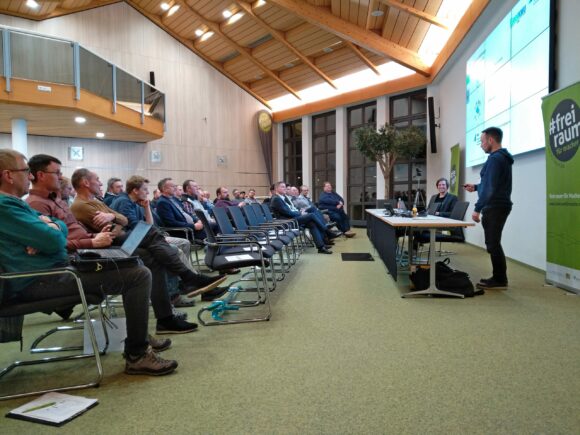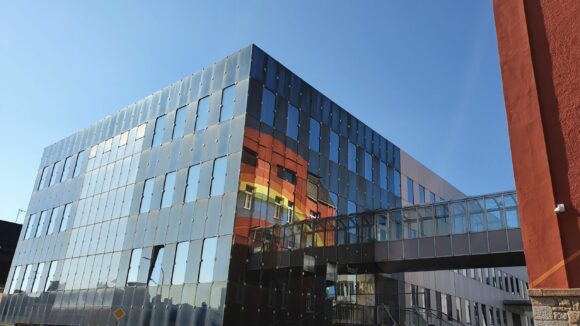The car of tomorrow will run on electricity or hydrogen and consist of more and more technical textiles. These textiles are taking on increasingly important functions in comfort, safety, acoustics and fuel economy, which is why their share per car is now around 30 kilograms, and rising. But recycling the mixed plastics is currently often fraught with difficulties. A project now completed by the Institute of Materials Science at Hof University of Applied Sciences (ifm) together with regional companies makes it easier to feed all components into the recycling loop. A newly developed recycling plant helps in this process.
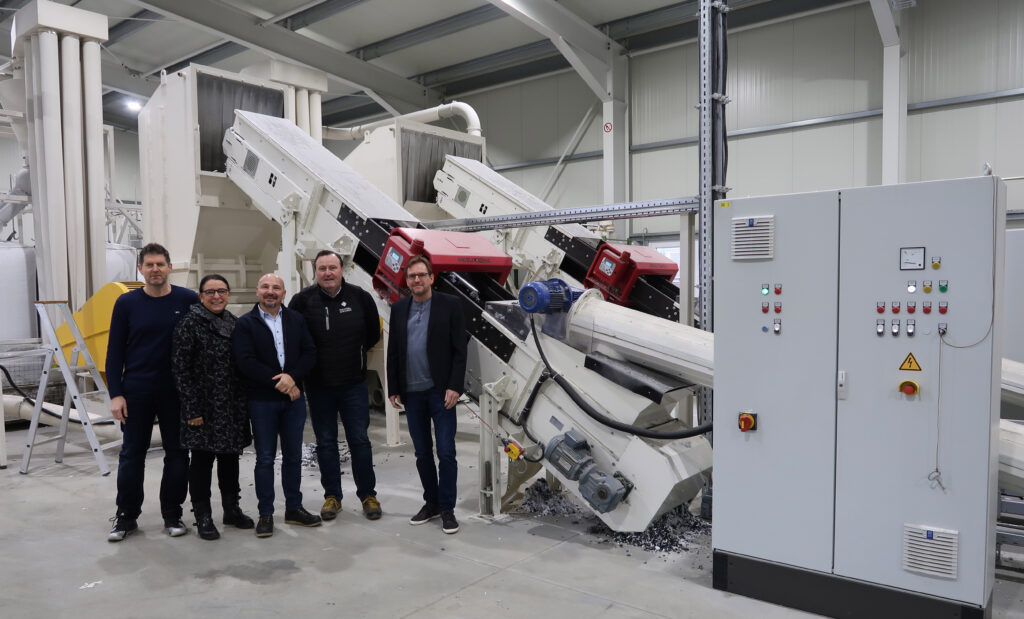
The aim of the research project, which ran for two and a half years, was to develop a controlled recycling process with which previously non-recyclable and heterogeneous textile residual materials can be recycled into uniform textile molding compounds (recyclates). Research associate Thorsten Bilek and project manager Prof. Oliver Lottes had received funding of EUR 190,000 for the “FaRec” project from the German Federal Ministry of Economics as part of the Central Innovation Program for SMEs (ZIM).
New recycling plant developed
For implementation, a highly innovative, continuously operating textile recycling plant was developed, designed and installed at the Barthmann company in cooperation with a regional partner and Hof University of Applied Sciences. Barthmann Kunststoff GmbH (Wunsiedel) is a specialist in the processing of technical plastic waste and Richter & Stegner Steuerungstechnik GmbH has expertise in control and plant technology
At the end of the project, it is now possible with the developed plant and process to recycle various textile wastes in such a way that 100% of the fine ground material can be reused for the production of technical composites.”
Olaf Thannheiser, Managing Director Barthmann Kunststoff GmbH
No more waste
And further: “Production waste from the manufacture of these composites can also be 100% recycled again. This creates a zero-waste product – there are no recycling losses whatsoever.” A primary requirement in the project was initially to finely grind large-area punching residues from heavy textile composites, which are not recyclable due to their material composition, to a defined particle size in a controlled manner. This ground material is in turn to be used as a so-called “sandwich core” for the production of new composites. “To achieve this, the fine ground material had to be enriched and homogenized with unmixed textile residual materials,” explains research group leader Alexandra Luft.
Multi-stage reduction process
This is where textile manufacturers and textile processing companies came into play: “The production of textiles from blended fibers generates large quantities of waste, which up to now can only be recycled for energy or to a very limited extent for materials. For the project, thermoplastic textile residues as well as residues with cellulose fiber content from industrial production were characterized and tested,” adds Thorsten Bilek
Due to the different materials, some of which may be in the form and size of edge trimmings, rolls or blanks, a multi-stage comminution process is required to produce a suitable scatterable fiber fine grind. First, the large-sized, compact textile waste is reduced to coarse chips by means of a special shredder.
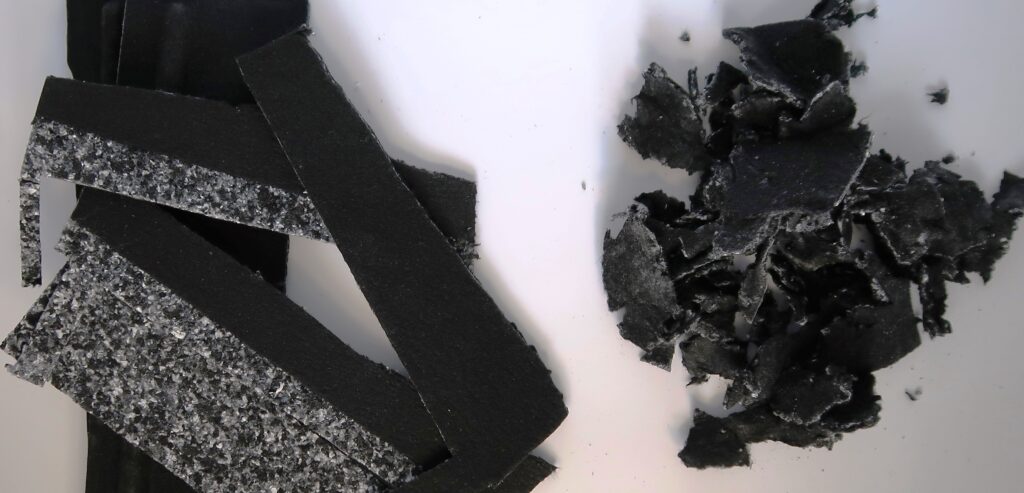
The aim is to dissolve the textile structures as far as possible. Subsequently, the textile chips have to be fed into a mixer in order to generate an initial uniform material mixing before fine grinding
Prof. Oliver Lottes
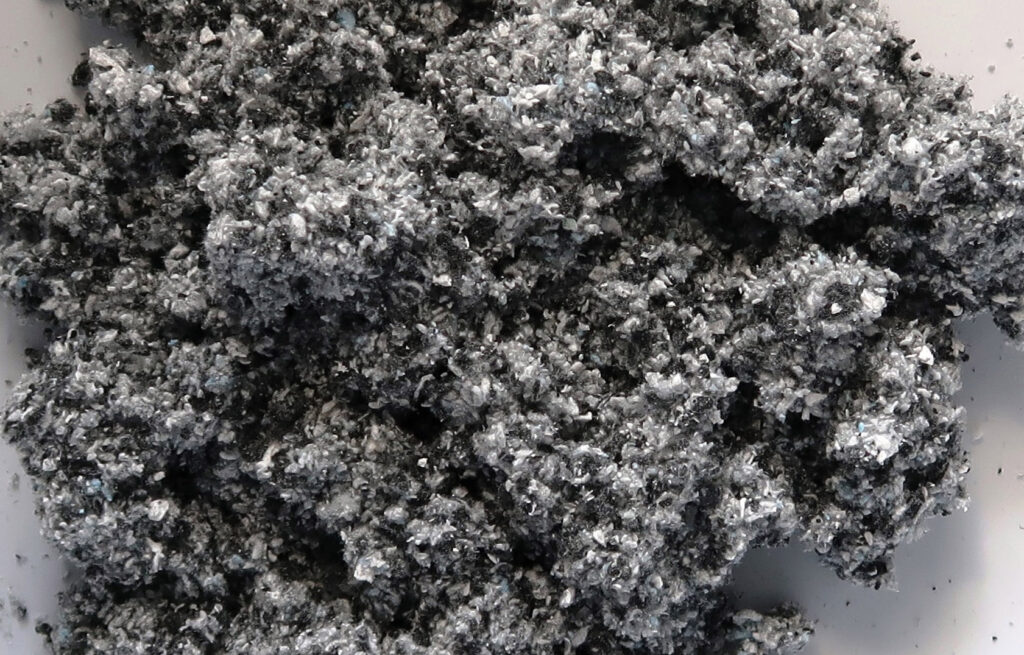
Production plant installed
The industrial application of the research results has also already been secured: Building on this project, a first production plant with a capacity of well over 100 tons per month has already been installed at the company Barthmann Kunststoff GmbH.




